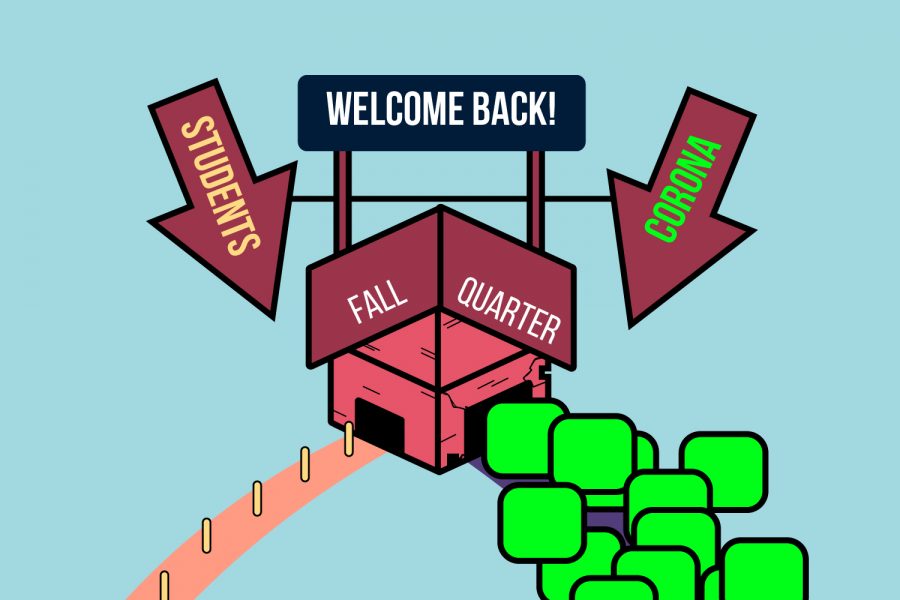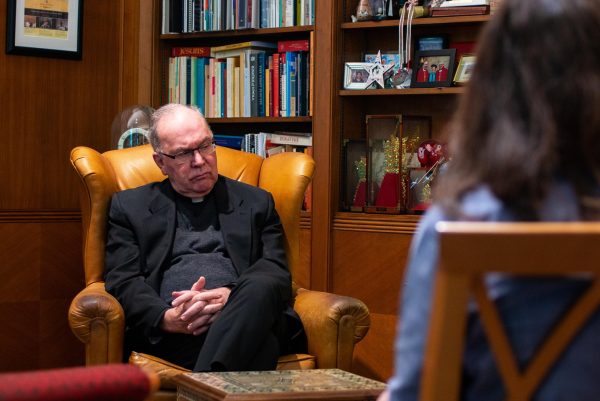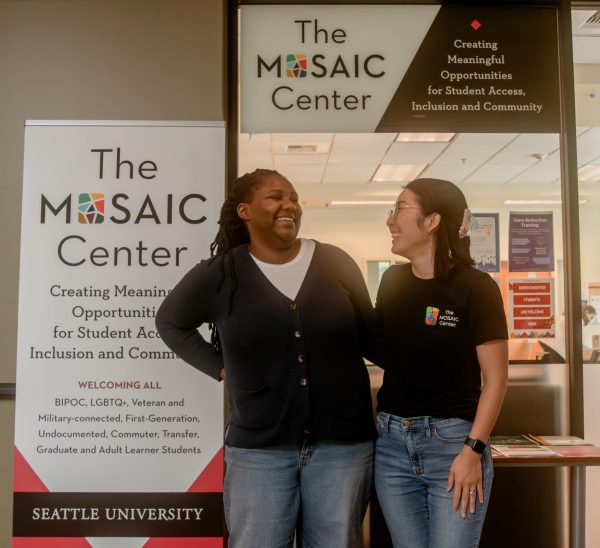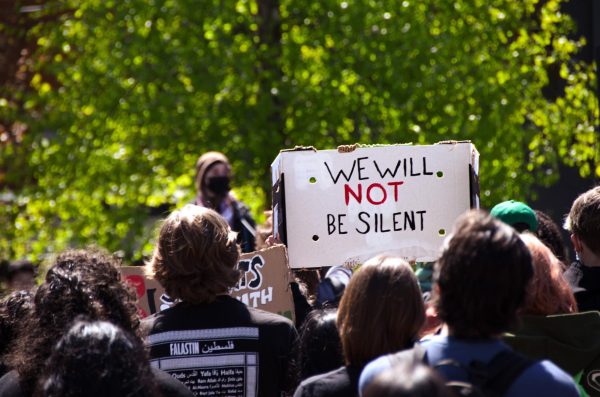One Hundred Questions for Fall Quarter
As spring quarter nears its end, speculation about what exactly fall quarter will look like abounds, and over a dozen Seattle U students were able to come up with 100 questions for administrators amidst the current pandemic. Since the abrupt transition to online classes in March, administrators and faculty throughout campus have been taking this spring and summer to plan for the upcoming school year, which the university has announced will take place in person.
Most plans for the next academic year have not been addressed publically as of yet, and many are still in the works. Some possibilities include decreasing dorm capacity to one student per room—eliminating some students from on-campus accommodations—and changing class times to adapt to different needs.
Although administrators could not give concrete answers to many questions at this time, they were able to share and highlight different plans and scenarios that could help give students a general idea of what to expect.
Housing (0:04-1:00)
As students make plans for fall housing, many have wondered how the pandemic will impact residence hall capacities. Rumors that dorms may be one student per room in the fall have circulated, but nothing has been officially announced by the university.
Director of Housing and Residence Life (HRL) David Stephen shared their tentative plans. According to Stephen, students must live in single-occupancy rooms, and there are three scenarios for how the university will determine which students get priority for the limited space.
The scenarios include prioritizing first-year students, upperclassmen, or a blend of the two. Depending on which scenario the university chooses, HRL has made the recommendation that the policy requiring first and second-year students to reside on-campus be waived. Additionally, HRL is in the process of putting together a database to help displaced students find housing off-campus in nearby neighborhoods.
Traditionally, a single room in the residence halls would be more expensive than a double or triple room. Stephen gave three scenarios for how housing could charge for the single-occupancy plan. The scenarios for prices include charging students the same cost that a double room would be, charging students the single room rate, or finding a cost somewhere between the first two options. HRL has made its recommendation to the university, but a formal decision has not yet been made.
In terms of who will be enforcing guidelines on safe practices in the residence halls, Stephen explained that Resident Assistants will not be expected to strictly enforce policies. Students will be given guidelines to follow, similar to how they are educated on housing policies when coming to campus, that will outline practicing safely living in a communal building and hold students accountable for their behavior.
To keep students safe in the event of a COVID-19 outbreak within residence halls, Stephen outlined a tentative plan. The first procedure pertains to a student that has been exposed to the virus but is asymptomatic: they would quarantine in their room for fourteen days per Washington Public Health guidelines. Another procedure, in the case there is a student exposed to the virus showing symptoms, is to relocate the individual to a residence hall, such as the Yobi apartments. However, no plan has been officially decided as of yet.
Academics (1:01-1:56)
Provost Shane Martin outlined the ways the university is attempting to implement plans to support students returning to campus. One plan that has already been announced is that fall quarter will now begin two weeks earlier than usual, on Sept. 9, and end after Thanksgiving.
“We just don’t know what the situation would be like at that time. Not just for COVID-19, but also for the flu,” Martin said. “And so it just seems very prudent, from a health standpoint, not to have that extra travel built in during the middle of the quarter.”
Students can expect classes to be held in a variety of formats with potentially new times, as the upcoming quarter includes classes through face-to-face, online and hybrid formats. Martin explained that classes requiring hands-on learning will be prioritized to be held in-person, whereas lecture-based classes have more flexibility to be held online or as hybrid courses. No formal decision has been made, but scenarios are being discussed based on government requirements.
“It certainly does depend on the class. However, I can say that class sizes will be done differently. It’s possible that a Monday, Wednesday, Friday class might have a portion of the students meet in person with the professor on Monday, maybe a third on Wednesday, the other third on Friday and cycle through that way,” Martin said. “So, it would still be one class, there would still be some virtual or online learning and then there would be face-to-face learning in smaller groups.”
Although Provost Martin could not confirm most plans being discussed, he said that Saturday classes are no longer an option being discussed by the university. Saturday classes already established by certain programs will still be in place, but no additional classes will be held.
In regards to questions about tuition and fees, Martin explained that the university will continue charging the regular cost of attendance and that any fees associated with available services will also be implemented.
“We’ll have different models of instruction, and some students may actually experience different models in their courses, meaning that they could have some courses that are under one model. But all of them will be high quality and our full curriculum,” Martin said.
Students will also see a mix of virtual events that will likely become the new normal for the time being. Students will no longer see large group gatherings on campus until restrictions are lifted on gathering sizes. Martin also highlighted that in many ways, fall quarter will be exciting as creative and innovative plans are discussed to create accessibility and a quality system for students and faculty.
Provost Martin concluded that more information on fall quarter will be sent out to the general public during the second or third weeks of June.
Life on campus & more (1:57-5:13)
Students can also expect protocols in place for safety around campus, which may range from routine temperature checks to wearing masks, according to Vice President for Student Development Alvin Sturdivant.
Sturdivant emphasized that scenarios and plans will be enacted based on regulations placed by the state. For now, the university is looking into the utilization of apps, contact tracing tools and hand-washing stations throughout campus and increasing signage for social distancing marks. The university has also been in contact with local hospitals and the University of Washington regarding the possibilities for testing options.
“I think a routine expectation will be daily health screenings, which would include temperature checks and student, faculty and staff self-reporting,” Sturdivant said.
In regard to safety protocols on campus, the university is also working on plans to get staff and student employees back on campus in a safe manner. Seattle U’s return-to-work strategy may include both remote and on-campus work options, depending on each office’s function. Offices on campus may have to stagger schedules to promote social distancing.
Furthermore, the university has been working on increasing the accessibility of mental health resources for students during spring quarter and making plans for fall quarter.
“I think what students can expect to see in the fall is, in addition to some in-person counseling opportunities, we will continue offering tele-counseling to help manage some of those issues that students have,” Sturdivant said. “That actually gives us the ability to have a much broader reach, particularly when we have more students back here on campus with us.”
Through the Employee Assistance Program, all Seattle U employees have access to counseling and other services as well.
In many ways, students will continue seeing some normalcy throughout campus—especially incoming students. Angel Asuncion-Reed, the assistant director for the Center for Student Involvement (CSI), highlighted the ways both new and returning students can get involved in campus activities.
“We encourage the SU club communities and their event planners to think creatively about providing in-person, online and hybrid options as they plan their events, from small to large-scale,” Asuncion-Reed said in an email statement. “ConnectSU, I feel, is the entry way for anyone seeking a club community.”
CSI is planning on hosting their Involvement Fair in some format, be it online or in person, in the fall, as well as holding workshops and training.
The Center for Community Engagement (CCE) has not stopped helping the greater Seattle U community during the pandemic. According to Julie Hurst, director of campus engagement, the CCE has compiled a webpage, Supporting our Neighbors during COVID-19, with resources for neighboring communities. The CCE, with the help of a donor, were able to donate $25,000 worth of food and supplies for Bailey Gatzert Elementary School community members.
“No matter what the fall may bring, we remain committed to the public health and safety of our students, campus and community partners,” Hurst said in an email statement.
Although not much has been officially confirmed, students should receive a better idea of what the fall will entail sometime during the next few weeks and throughout the summer. Many aspects of life at Seattle U will change, but administrators are coming up with creative solutions to tackle different situations the COVID-19 pandemic has brought about.











